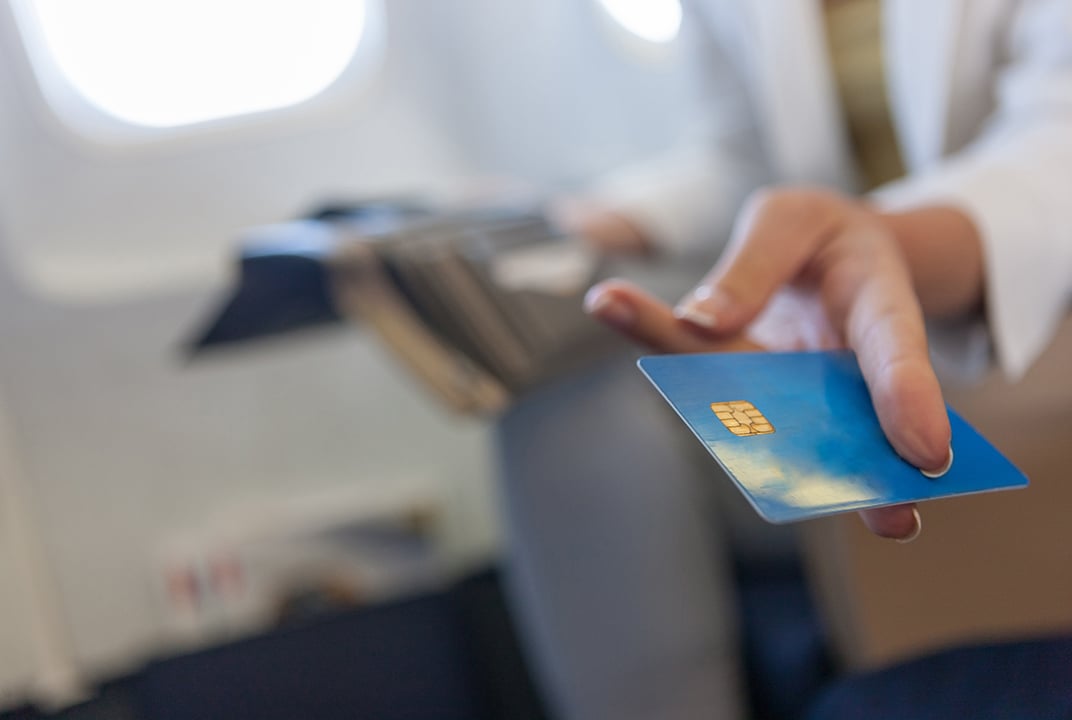Broadband in the sky will be a $130 billion market by 2035
London School of Economics predicts airlines will generate an additional $30 billion in incremental revenue
Airlines to benefit from significant revenue growth in broadband enabled e-commerce, advertising and premium content
Inflight broadband has the potential to create a $130 billion global market within the next 20 years, resulting in $30 billion of additional revenue for airlines by 2035. This is the conclusion of a first-of-its-kind research study, ‘Sky High Economics: Quantifying the commercial opportunities of passenger connectivity for the global airline industry’, carried out by London School of Economics and Political Science (LSE) in association with Inmarsat (LSE: ISAT.L), the world’s leading provider of global, mobile satellite communications.
Market potential
Based on current IATA data and industry sources, Sky High Economics has developed an independent forecasting model. It predicts broadband enabled ancillary revenues for airlines will come from four main revenue streams:
- Broadband access charges – providing connectivity to passengers inflight
- E-commerce and destination shopping – making purchases on-board aircraft with expanded product ranges and real-time offers
- Advertising – pay-per-click, impressions, sponsorship deals with advertisers
- Premium content – providing live content, on demand video and bundled W-IFEC access
| Broadband access | E-commerce | Advertising | Premium content | Total | |
| 2018 | $822 million | $36 million | $26 million | $39 million | $1 billion |
| 2028 | $9 billion | $3 billion | $2.9 billion | $731 million | $15 billion |
| 2035 | $15.9 billion | $6.8 billion | $6 billion | $1.4 billion | $30 billion |
At present, only some 53 out of an estimated 5,000 airlines worldwide offer inflight broadband connectivity.
On the back of strong passenger demand, inflight internet will be ubiquitous on commercial aircraft by 2035. Currently, airlines receive an additional $17 per passenger from ‘traditional’ ancillary services such as duty free purchases and inflight retail, food and drink sales. Broadband enabled connected ancillary revenues will add an extra $4 by 2035.
Drivers for growth
Full service carriers look set to claim the lion’s share of airline revenues (63%), generating $19 billion by 2035. Capitalising on longer flight times, additional revenue will come from the ability to maximise e-commerce platforms and striking deals with content providers to offer premium packages. The Sky High Economics study predicts low cost carriers will generate $11 billion by 2035, the bulk of which will come from selling connectivity to passengers.
Regional differences
The research also identified that regionally, the greatest opportunity for broadband-enabled ancillary services is in Asia Pacific. Driven by passenger growth and availability of services, airlines in Asia Pacific will benefit from $10.3 billion of ancillary revenues by 2035, followed by Europe ($8.2 billion) and North America ($7.6 billion).
Dr Alexander Grous (B. Ec, MBA, M.Com, MA, PhD.), Department of Media and Communications, LSE and author of Sky High Economics said: “The opportunity available to airlines is enormous. The Sky High Economics study predicts the creation of a $130 billion market within the next two decades. Globally, if airlines can provide a reliable broadband connection, it will be the catalyst for rolling out more creative advertising, content and e-commerce packages. We will see innovative deals struck, partnerships formed and business models fundamentally changed for new players to lay claim to the $100 billion opportunity away from airlines. Broadband-enabled ancillary revenue has the potential to shape a whole new market and it’s something airlines need to be planning for right now.”
Rupert Pearce, Chief Executive Officer, Inmarsat, said: “Inflight connectivity is no longer a luxury for passengers, it’s an expectation. The analysis from LSE shows there is huge scope for airlines to unlock entirely new revenue streams, while also helping to improve the passenger experience. What’s more, airlines will become the gatekeepers to a $130 billion market. If they can install a high quality inflight broadband connection, we will see them open the doors to some of the world’s largest organisations.”
Inmarsat is transforming the global aviation industry by bringing complete connectivity to every aircraft and flight path in the world. It is the first and only provider with a complete next-generation High-Throughput Satellite (HTS) network spanning the world. Inmarsat is also the only aviation broadband provider capable of connecting the complete aircraft from cabin to cockpit. Inmarsat’s world-leading passenger solutions are complemented by its industry-standard certified safety and operations services. GX Aviation is the world’s first global, high-speed inflight broadband service from a single operator. It allows airline passengers to browse the internet, stream videos, check social media and more during flights, with an on-board connectivity experience on par with mobile broadband services available on the ground.
About Sky High Economics
Sky High Economics is the first research project to comprehensively model the socio-economic impact that the connectivity revolution in the air is set to have.
The research model created for Sky High Economics by the LSE, will be used to deliver a series of events hosted by Inmarsat around the world outlining the economic benefits to each region. Airlines are being invited to use the model to receive bespoke consultancy around what broadband connectivity can do for them.
Further information
About Inmarsat
Inmarsat plc is the leading provider of global mobile satellite communications services. Since 1979, Inmarsat has been providing reliable voice and high-speed data communications to governments, enterprises and other organizations, with a range of services that can be used on land, at sea or in the air. Inmarsat operates around the world, with a presence in the major ports and centres of commerce on every continent. Inmarsat is listed on the London Stock Exchange (ISAT.L). For more information, please visit www.inmarsat.com. The Inmarsat press release newsfeed and corporate updates are on @InmarsatGlobal.
Jonathan Sinnatt
Director of Corporate Communications
+44 (0)20 7728 1935
[email protected]
Robeel Haq
Senior PR Manager and Social Media, Aviation
+44 (0)20 7728 1352
[email protected]

